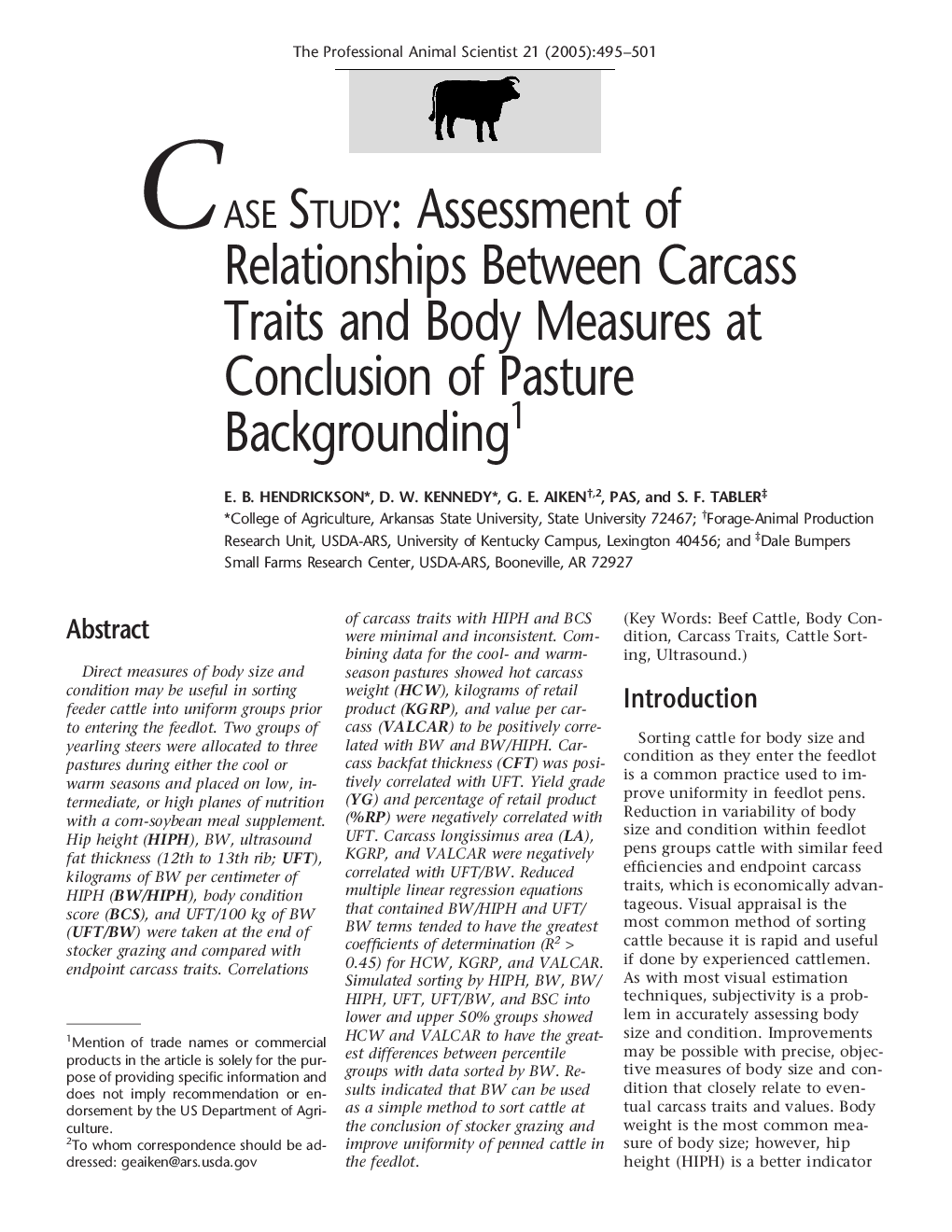| Article ID | Journal | Published Year | Pages | File Type |
|---|---|---|---|---|
| 8985605 | The Professional Animal Scientist | 2005 | 7 Pages |
Abstract
Direct measures of body size and condition may be useful in sorting feeder cattle into uniform groups prior to entering the feedlot. Two groups of yearling steers were allocated to three pastures during either the cool or warm seasons and placed on low, intermediate, or high planes of nutrition with a corn-soybean meal supplement. Hip height (HIPH), BW, ultrasound fat thickness (12th to 13th rib; UFT), kilograms of BW per centimeter of HIPH (BW/HIPH), body condition score (BCS), and UFT/100Â kg of BW (UFT/BW) were taken at the end of stocker grazing and compared with endpoint carcass traits. Correlations of carcass traits with HIPH and BCS were minimal and inconsistent. Combining data for the cool- and warm-season pastures showed hot carcass weight (HCW), kilograms of retail product (KGRP), and value per carcass (VALCAR) to be positively correlated with BW and BW/HIPH. Carcass backfat thickness (CFT) was positively correlated with UFT. Yield grade (YG) and percentage of retail product (%RP) were negatively correlated with UFT. Carcass longissimus area (LA), KGRP, and VALCAR were negatively correlated with UFT/BW. Reduced multiple linear regression equations that contained BW/HIPH and UFT/BW terms tended to have the greatest coefficients of determination (R2 >0.45) for HCW, KGRP, and VALCAR. Simulated sorting by HIPH, BW, BW/HIPH, UFT, UFT/BW, and BSC into lower and upper 50% groups showed HCW and VALCAR to have the greatest differences between percentile groups with data sorted by BW. Results indicated that BW can be used as a simple method to sort cattle at the conclusion of stocker grazing and improve uniformity of penned cattle in the feedlot.
Related Topics
Life Sciences
Agricultural and Biological Sciences
Animal Science and Zoology
Authors
E.B. Hendrickson, D.W. Kennedy, G.E. Pas, S.F. Tabler,
